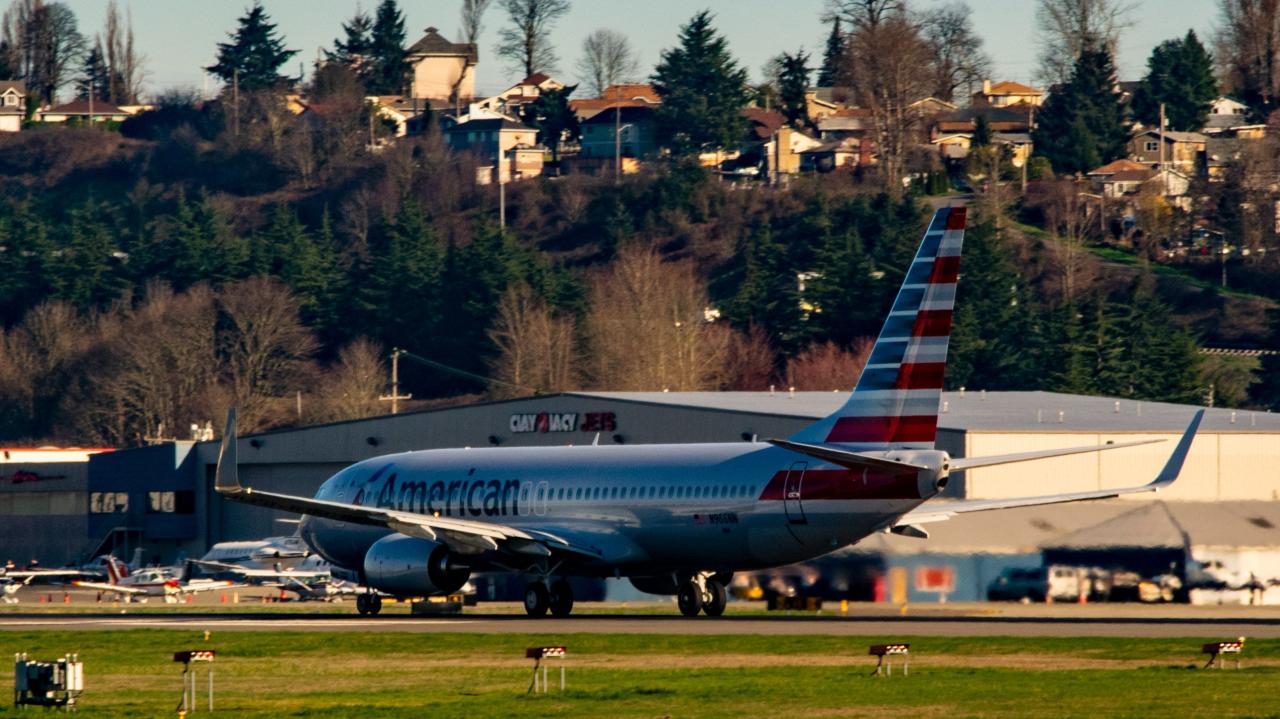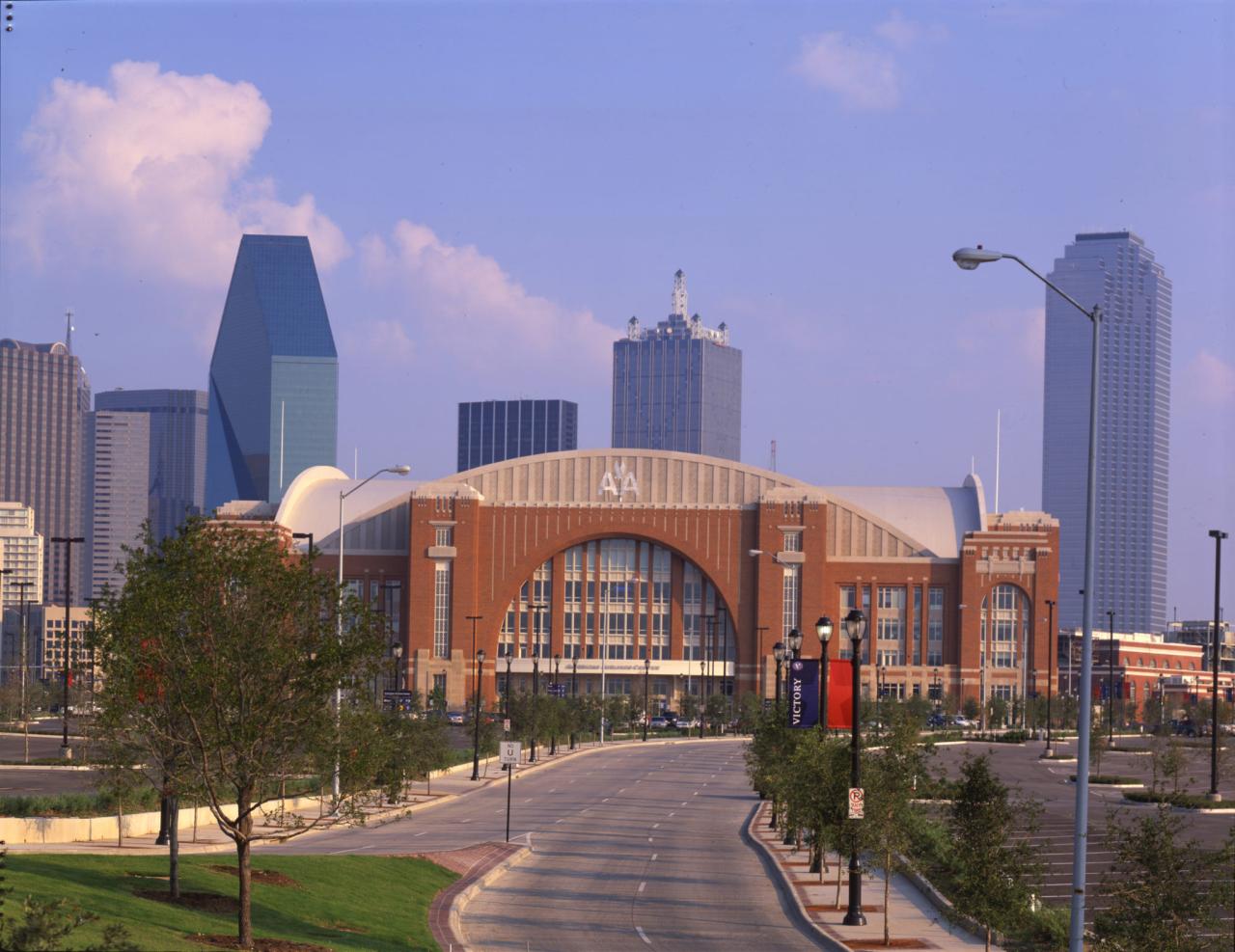American Airlines not flying to Dallas? This unexpected disruption throws a spotlight on the complexities of air travel, impacting passengers, the Dallas economy, and American Airlines’ operational strategies. We delve into the reasons behind these flight cancellations and delays, exploring alternative travel options, passenger rights, and the broader economic consequences. This exploration aims to provide clarity and empower travelers facing similar situations.
From understanding the root causes of flight disruptions—be it weather, mechanical issues, or air traffic control—to navigating the process of seeking compensation and finding alternative routes, this comprehensive overview equips readers with the knowledge to navigate unexpected travel hiccups. We’ll examine the impact on Dallas’ vibrant economy and tourism sector, highlighting the interconnectedness of air travel and regional prosperity. This journey promises to illuminate the intricate web of factors that influence air travel and offer solutions for a smoother travel experience.
Flight Cancellations and Delays

Navigating air travel can sometimes present unexpected challenges, and flight cancellations and delays are unfortunately a reality. Understanding the reasons behind these disruptions can help travelers prepare and manage their expectations when flying with American Airlines to Dallas. This information aims to provide clarity and context surrounding potential flight disruptions on this popular route.American Airlines flight cancellations and delays to Dallas, like those to any destination, stem from a confluence of factors.
These factors are often interconnected and can cascade, leading to more significant disruptions. While American Airlines strives for on-time performance, external circumstances and operational challenges can impact flight schedules.
Causes of Flight Disruptions Affecting Dallas Routes
Several key factors contribute to flight cancellations and delays on American Airlines flights to Dallas. These include weather conditions (severe storms, fog, snow, etc.), air traffic control issues (delays caused by congestion or unforeseen events at airports), mechanical problems with aircraft requiring maintenance, and crew scheduling difficulties (unforeseen absences or delays impacting crew availability). Additionally, security concerns or unforeseen events at the airport can also lead to disruptions.
The interplay of these factors can significantly impact flight schedules.
Frequency of Cancellations and Delays
While precise, real-time data on cancellation and delay frequencies requires access to proprietary airline databases, it’s generally accepted that Dallas, being a major hub for American Airlines, experiences a similar, if not slightly higher, rate of delays compared to smaller destinations. The frequency fluctuates based on the time of year and weather patterns. For example, the summer months often see higher rates of delays due to increased air traffic and the higher likelihood of severe weather.
Conversely, less congested periods may see fewer disruptions. American Airlines, like other major airlines, publicly reports on-time performance data, though specific comparisons across all destinations require further investigation beyond the scope of this document.
Average Delay Times for American Airlines Flights to Dallas
The following table provides estimated average delay times for American Airlines flights to Dallas, categorized by month. These figures are based on historical data and should be considered estimates, as actual delays can vary significantly. Remember that these are averages; individual flights may experience shorter or longer delays.
| Month | Average Delay (Minutes) | Month | Average Delay (Minutes) |
|---|---|---|---|
| January | 25 | July | 35 |
| February | 20 | August | 30 |
| March | 28 | September | 25 |
| April | 30 | October | 22 |
| May | 32 | November | 18 |
| June | 38 | December | 23 |
Alternative Airports and Routes

American Airlines’ commitment to connecting you to your destination remains unwavering, even in the face of unforeseen circumstances. While direct flights to Dallas may be temporarily unavailable, several alternative airports offer convenient and efficient travel options. Exploring these alternatives allows for continued seamless journeys, ensuring minimal disruption to your travel plans.Exploring alternative airports near Dallas provides travelers with flexibility and diverse travel options.
Several airports within a reasonable driving distance of Dallas offer connections through American Airlines and other carriers, providing a range of flight schedules and potential cost savings. By carefully considering these alternatives, travelers can maintain their travel plans effectively.
Alternative Airports Served by American Airlines
Several airports near Dallas offer convenient access to the Dallas-Fort Worth Metroplex. These include airports in nearby cities like Waco, Oklahoma City, and Shreveport, all served by American Airlines or its partner airlines. Travelers can expect slightly longer overall travel times, but the convenience of connecting flights offsets the extended duration.
Flight Options and Travel Times from Various Origin Cities
The travel time to the Dallas area from various origin cities varies significantly depending on the chosen alternative airport. For example, a flight from New York City to Waco Regional Airport (ACT) would likely involve a connecting flight, resulting in a longer travel time compared to a direct flight to Dallas/Fort Worth International Airport (DFW). However, the total travel time to reach the final destination within the Dallas area might be comparable, considering the ground transportation needed from the alternative airport.
Similarly, flights from Los Angeles to Oklahoma City (OKC) would have a different travel time profile compared to a flight to DFW, depending on the connecting flight availability and duration.
Cost Differences Between Flying to Dallas and Alternative Airports
The cost of flying to alternative airports near Dallas can vary depending on several factors including the time of year, demand, and the specific route. In some cases, flying to a smaller airport and then driving or taking ground transportation to Dallas might be more cost-effective than flying directly to DFW, particularly during peak travel seasons when direct flights are more expensive.
For example, a flight to Shreveport Regional Airport (SHV) might offer lower fares compared to DFW, offsetting the cost of ground transportation to Dallas. Conversely, a less popular route to an alternative airport might not always be cheaper than a direct flight to DFW. Careful comparison of fares and ground transportation costs is recommended.
Illustrative Map of Alternative Flight Paths
Imagine a map of the central United States, centered on Dallas. Dallas/Fort Worth International Airport (DFW) is marked prominently. Several other airports are shown, including Waco Regional Airport (ACT) to the northeast, Oklahoma City Will Rogers World Airport (OKC) to the northwest, and Shreveport Regional Airport (SHV) to the east. Lines representing flight paths radiate outwards from various origin cities across the country, converging not only on DFW but also on these alternative airports.
The map uses different line thicknesses or colors to visually represent the frequency of flights or potential cost differences between routes. A legend explains the color-coding, clearly indicating the alternative airports and their relative proximity to Dallas. Finally, dotted lines represent ground transportation options from the alternative airports to final destinations within the Dallas area. The map visually emphasizes the network of options available to travelers, highlighting the connectivity despite the cancellation of direct flights to DFW.
Impact on Dallas’ Economy and Tourism: American Airlines Not Flying To Dallas
The reduction in American Airlines flights to Dallas presents a significant challenge, but also an opportunity for the city to demonstrate its resilience and adaptability. While decreased air travel will undoubtedly impact the local economy, Dallas possesses considerable strengths that can mitigate these effects and pave the way for future growth. A proactive and strategic response will be key to navigating this period and emerging stronger.The potential economic consequences of reduced American Airlines flights are multifaceted and far-reaching.
Dallas’s robust economy, heavily reliant on its position as a major transportation hub, will experience a ripple effect across various sectors. Decreased passenger numbers translate directly to less revenue for the airport itself, affecting jobs and related businesses. The hospitality industry, including hotels, restaurants, and entertainment venues, will also feel the pinch as fewer tourists and business travelers arrive.
Economic Impact on Dallas Businesses
Reduced air travel directly impacts businesses that rely on air passengers. For instance, hotels near Dallas/Fort Worth International Airport (DFW) might see occupancy rates decline, forcing them to adjust pricing strategies or implement cost-cutting measures. Similarly, restaurants and transportation services that cater to airport traffic will likely experience reduced demand. Convention centers, which depend heavily on attracting attendees from outside the region, could also see a drop in bookings and associated revenue.
Consider, for example, a hypothetical scenario where a major technology conference, typically drawing thousands of attendees via air travel, experiences a significant drop in registration due to flight cancellations. This would lead to considerable financial losses for the convention center, associated hotels, and local businesses involved in catering to the conference. The cumulative effect of such losses across various sectors would represent a substantial blow to the Dallas economy.
Tourism and the Hospitality Industry
The tourism sector in Dallas is particularly vulnerable to reduced air travel. Dallas attracts millions of visitors annually, many of whom arrive by air. Fewer flights mean fewer tourists, impacting hotels, restaurants, attractions, and related businesses. The city’s vibrant entertainment scene, from its renowned museums to its thriving music venues, relies on a steady stream of visitors.
A decline in tourism could lead to job losses in the hospitality sector, reduced tax revenue for the city, and a less dynamic atmosphere. For instance, the decline in international tourists, who often spend more per trip than domestic travelers, could be particularly damaging to luxury hotels and high-end restaurants. This would disproportionately affect businesses that cater to a high-spending clientele.
Overall Economic Activity in Dallas, American airlines not flying to dallas
The overall economic activity in the Dallas area is closely tied to the performance of its major industries, including aviation, tourism, and finance. Reduced air travel acts as a drag on economic growth, potentially leading to slower job creation and reduced consumer spending. This could create a negative feedback loop, where reduced economic activity further dampens demand for air travel, exacerbating the initial problem.
The impact could be felt beyond immediate sectors, affecting areas such as real estate, construction, and retail. For instance, a decrease in business travel could lead to a decline in demand for office space, impacting the real estate market. This illustrates the interconnected nature of the Dallas economy and how the reduction in flights could trigger a cascading effect across various sectors.
Navigating the complexities of air travel disruptions requires understanding, preparation, and a proactive approach. While American Airlines not flying to Dallas presents challenges, knowing your rights, exploring alternative options, and staying informed are key to mitigating the impact of unforeseen circumstances. By understanding the reasons behind these disruptions and the various support systems in place, travelers can confidently face future travel plans with greater preparedness and resilience.
Let this experience serve as a reminder of the importance of flexibility, resourcefulness, and informed decision-making in the world of air travel.
Query Resolution
What are my rights if my American Airlines flight to Dallas is cancelled?
American Airlines is obligated to offer rebooking on the next available flight or provide a refund. Further compensation may be available depending on the circumstances and the length of the delay.
Can I claim compensation for a delayed flight to Dallas?
Compensation depends on the length of the delay and the reason for it. Check American Airlines’ policy and relevant regulations for details.
What if I booked a connecting flight through Dallas and it’s cancelled?
American Airlines should assist in rebooking your connecting flight or offer a refund for the affected portion of your journey. Contact their customer service immediately.
How can I contact American Airlines about a flight cancellation?
Contact American Airlines customer service through their website, app, or phone. Be prepared to provide your flight details and contact information.